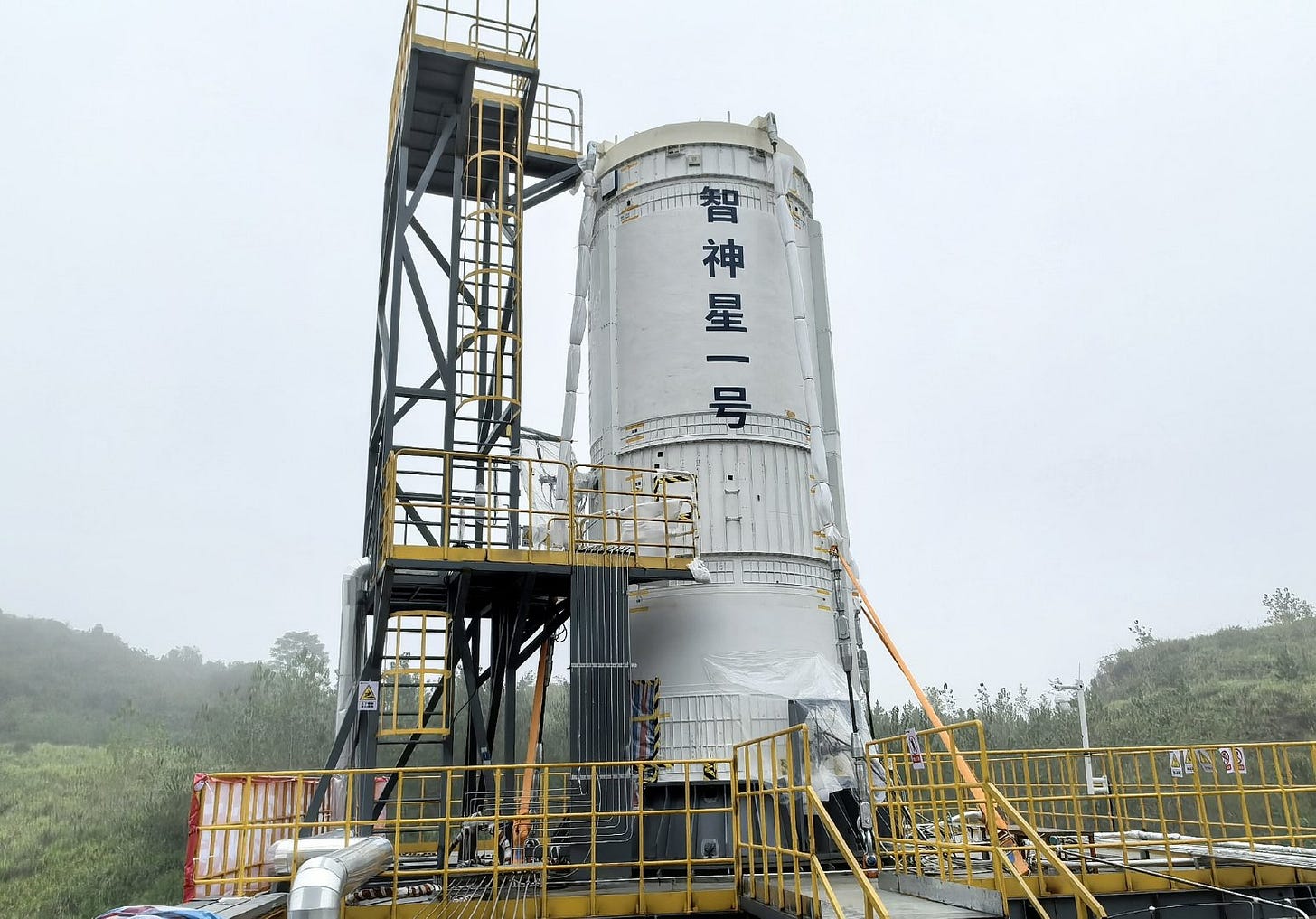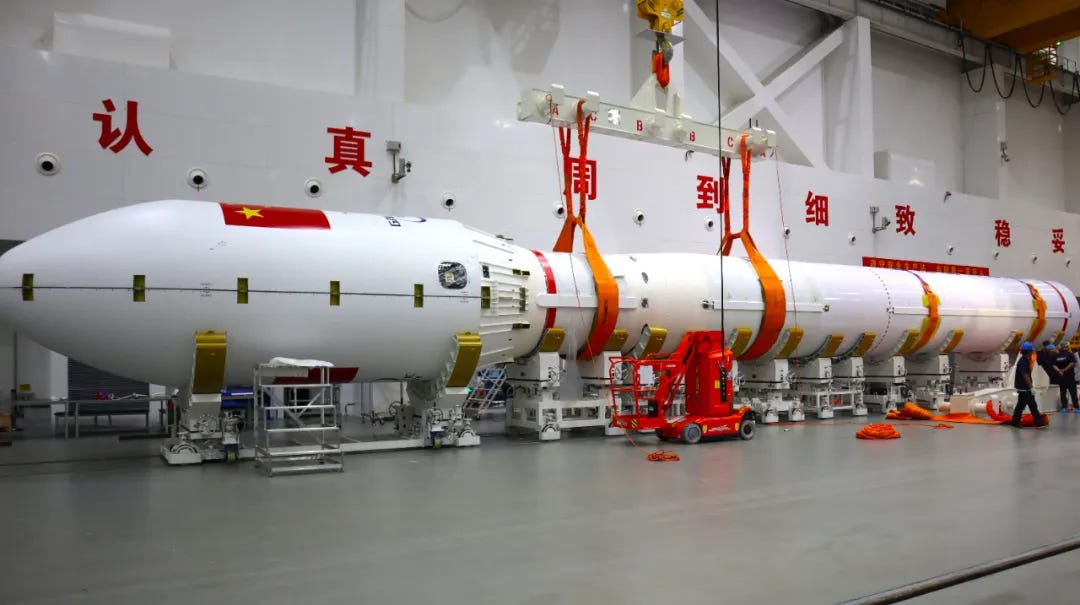Galactic Energy Fires Pallas-1 Second-Stage, Assembles Ceres-2 for Launch
A few billion Yuan was also raised alongside the launch vehicle milestones.
Launch provider Galactic Energy has completed another milestone with its reusable rocket development while preparing to fly a new solid-fueled launch vehicle, alongside gaining new investment.
Galactic Energy announced on September 28th that Pallas-1’s1 second-stage completed a nearly four-minute static fire, through burning rocket-grade kerosene and liquid oxygen in its single CQ-50 engine, generating about 50 tons of thrust. According to the company, the static fire demonstrated all planned second-stage burn thrust levels, as well as smooth startup and shutdown, for its complete success. Additionally, launch vehicle monitoring and electrical control systems were verified.
Pallas-1’s second-stage test fire took place at Galactic Energy’s engine test facility near Chizhou (池州市), in Anhui (安徽) province, on a modified stand above a flame trench usually used for verifying CQ-50 engines as they pass through production. To guarantee the stage remained in place, teams bolted down the bottom of the stage to the stand while also attaching a hold-down system to the top of the stage with four sufficiently strong cables. It was mentioned that the China National Space Administration and the State Administration of Science, Technology and Industry for National Defense oversaw the implementation of systems to keep the stage in place and in line with new regulations.
With the static fire being called a complete success, Galactic Energy has ticked off one of the few remaining milestones for Pallas-1’s debut flight. Currently remaining are a first-stage static fire (all seven engines are currently installed), final assembly of the flight vehicle, delivery of the rocket to the launch pad, and potential payload integration. While expected before the end of the year, a specific target date is yet to be announced directly; it has been reported that the rocket will fly from the Jiuquan Satellite Launch Center around November for its debut mission.
In the hours after the static firing, the company disclosed that its D series funding round had been completed, raising 2.4 billion Yuan (approximately 336.37 million United States Dollars). Investors in this round included Beijing Commercial Aerospace and Low-Altitude Economy Industry Investment Fund (北京市商业航天和低空经济产业投资基金), Nanjing Innovation Investment Group and various Nanjing Liuhe District investment platforms (南京市创新投资集团及南京六合区各级投资平台), Sichuan Manufacturing Collaboration Fund and Sichuan Regional Collaboration Fund (四川制造业协同基金和四川区域协同基金), Sichuan Achievement Transformation Fund (四川成果转化基金), Jinan Zhongtai Jiaochan Fund (济南中泰交产基金), Jiaorong Junhong Phase Five Nanjing Fund (交融君泓五期南京基金), Yizhuang Zhongying Fuyao Fund (亦庄中瀛扶摇基金), Chizhou Meiling Chixiang Fund (池州梅岭池香基金), and Hainan Hecheng Aerospace Fund (海南和城航天基金), most of which are linked to municipal, provincal, or state governments. The new funding is set to be used for the soon-to-debut Pallas-1, to increase production and refine reuse technologies, and to consolidate the Ceres series of rockets’ position in China’s launch market, with Ceres-1 already leading private sector launches.
Additionally, in a short update on September 28th, Galactic Energy shared that the four-stage Ceres-22 launch vehicle has completed assembly in Haiyang (海阳市)3, following integration testing in Ziyang (资阳市)4 a short while ago. Earlier in the month, the vehicle was in a partially assembled state.
In the coming weeks, the company expects Ceres-2 to perform its maiden flight from a sea-launch platform, carrying six satellites and hosting two payloads on the fourth stage.
A two-stage partially reusable rocket weighing about 283,000 kilograms, when fully fuelled and with rocket-grade kerosene and liquid oxygen, capable of sending up to 8,000 kilograms into low Earth orbit.
Powered by three solid-fuelled stages and a fourth stage burning liquid propellants to lift 1,600 kilograms to low Earth orbit or 1,300 kilograms to a sun-synchronous orbit.
Sat facing south onto the Yellow Sea in Shandong (山东) province.
Located in the east of Sichuan (四川) province.





